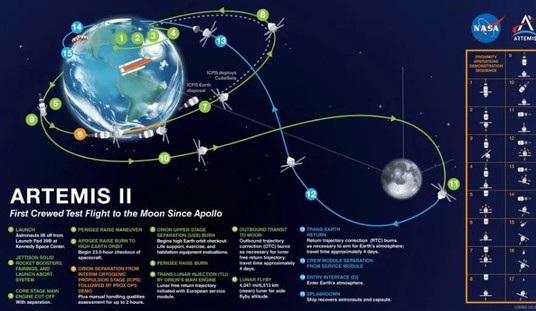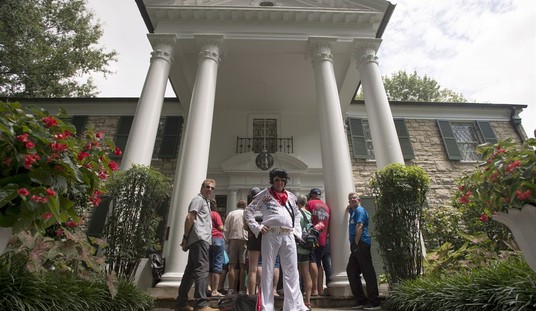Had Minneapolis stopped this “autonomous zone” when it started, one young woman might still be alive. Several days after protesters blocked the intersection near where Winston Boogie Smith was shot and killed by US Marshals, the city of Minneapolis finally dismantled it and started arresting the demonstrators blocking traffic. Police then spent the night enforcing that reopening, a clear distinction from the city’s abdication from George Floyd Square.
Mayor Jacob Frey told the media, “We need to make sure everyone is safe,” which might be news to people at Chicago and 38th:
A large group of law enforcement moved into Minneapolis Uptown neighborhood, where protesters had shut down the intersection in response to a deadly law enforcement shooting, and began taking people into custody Tuesday evening. This comes after city officials shared plans to reopen the area to traffic.
A FOX 9 crews on scene saw officers from multiple agencies move in around 8:30 p.m. Tuesday and put up tape around Lake Street between Girard Avenue and Hennepin Avenue. A handful of protesters appeared to be under arrest with cuffed with zipties around their wrists. City crews also loaded up trucks with items placed in the road by protesters to create the makeshift barricades.
In a press conference Tuesday afternoon, Minneapolis Mayor Jacob Frey said arrests would be made if the protest was no longer peaceful in the Uptown area.
“We recognize that peaceful protest and First Amendment speech is extremely essential, not just to the healing process, but to the democratic process and we want to make sure that it’s protected, but we cannot allow the unauthorized closure of streets,” said Frey during a press conference Tuesday afternoon. …
“It is dangerous to have the street closed off with makeshift barriers. It has been dangerous for both to patrons, to residents, and also to protesters, who we have an obligation [to] make sure the people are indeed safe,” said Frey.
True enough. So why doesn’t that apply to the people around George Floyd Square? It can’t be that the city’s more worried about the businesses and people in a “nicer” part of town … can it? Isn’t Chicago and 38th a major hub for the local business community too? Watch Frey’s explanation for this relatively prompt action in Uptown and try to suss out how any of it doesn’t apply to George Floyd Square.
That brings us to another big question from the Uptown protest this week: Did Nicholas Kraus intend to kill protesters blocking a street in Minneapolis? Or was he under the influence at the worst possible place and time? Police investigating the homicide of the 31-year-old protester aren’t saying much about motive, but the Star Tribune reported last night that Kraus has a history of drunk driving … a long history of it:
The St. Paul man who drove an SUV into a parked car protecting protesters blocking an Uptown intersection and killed a woman does not have a driver’s license and has a history of drunken driving convictions and other crimes dating back more than 17 years, according to authorities.
Nicholas D. Kraus, 35, remains jailed Tuesday without bail on suspicion of criminal vehicular homicide in connection with the crash late Sunday that killed 31-year-old Deona M. Knajdek of Minneapolis and injured three other protesters. …
Kraus’ criminal history in Minnesota includes five convictions for drunken driving, most recently in 2016 in Anoka County and as far back as 2008. He’s also been convicted numerous times for driving without a valid license, and for assault, failure to have auto insurance and giving police a false name.
Police have yet to say whether the driver targeted the protesters; however, “the use of drugs or alcohol … may be a contributing factor in this crash,” Minneapolis Police Department spokesman John Elder said Monday.
Other protesters at the scene insist that Kraus targeted the protesters. If so, he took a decidedly odd strategy of plowing into a parked car to do it. Witnesses say Kraus sped up as he approached, but depending on his level of intoxication, that might not mean much.
One hint that investigators are leaning away from that explanation is the charge under which he’s being held … for now. Criminal vehicular homicide in Minnesota does not require any proof of intent. It applies to negligent operation of a vehicle “in a grossly negligent manner” or while intoxicated. (There are also clauses about knowingly operating a defective vehicle and leaving the scene of the accident, which clearly aren’t the issue here.) The charge carries a maximum of 15 years when intoxication can be proven, and given Kraus’ track record, that seems a pretty safe bet.
If police and prosecutors have any evidence that Kraus deliberately targeted the protesters, that would escalate to at least a manslaughter charge or more likely some form of murder. And it still might, but one has to believe that those charges would have escalated before now if police had that kind of evidence. Reportedly, Kraus will get formally charged later today, at which point we’ll know for sure whether this was a targeted attack or just another good reason for cities to ensure that mobs don’t block streets.







Join the conversation as a VIP Member